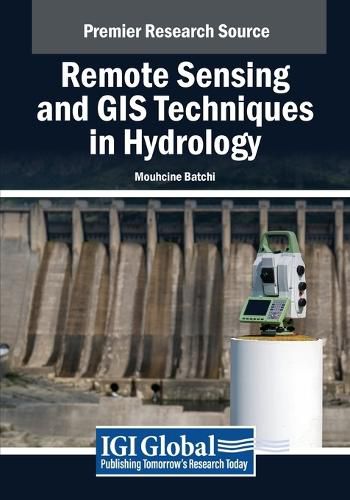Readings Newsletter
Become a Readings Member to make your shopping experience even easier.
Sign in or sign up for free!
You’re not far away from qualifying for FREE standard shipping within Australia
You’ve qualified for FREE standard shipping within Australia
The cart is loading…






This title is printed to order. This book may have been self-published. If so, we cannot guarantee the quality of the content. In the main most books will have gone through the editing process however some may not. We therefore suggest that you be aware of this before ordering this book. If in doubt check either the author or publisher’s details as we are unable to accept any returns unless they are faulty. Please contact us if you have any questions.
Remote sensing and Geographic Information Systems (GIS) have become essential tools in the field of hydrology, offering powerful methods for understanding and managing water resources. These technologies provide critical insights into hydrological processes, enabling better spatial analysis and decision-making to address environmental, social, and economic challenges related to water. From monitoring river basins and assessing flood risks to managing water quality and predicting droughts, remote sensing and GIS are revolutionizing how we study and interact with water systems. Remote Sensing and GIS Techniques in Hydrology delves into advanced principles and techniques, focusing on their integration with emerging technologies like unmanned aerial vehicles (UAVs), artificial intelligence, and machine learning. Through theoretical discussions, practical case studies, and innovative approaches, this publication demonstrates how remote sensing and GIS can be effectively utilized to tackle complex hydrological challenges. It serves as a valuable resource for researchers, practitioners, students, and policymakers, offering insights into state-of-the-art methodologies and fostering the adoption of advanced tools for sustainable water management.
$9.00 standard shipping within Australia
FREE standard shipping within Australia for orders over $100.00
Express & International shipping calculated at checkout
This title is printed to order. This book may have been self-published. If so, we cannot guarantee the quality of the content. In the main most books will have gone through the editing process however some may not. We therefore suggest that you be aware of this before ordering this book. If in doubt check either the author or publisher’s details as we are unable to accept any returns unless they are faulty. Please contact us if you have any questions.
Remote sensing and Geographic Information Systems (GIS) have become essential tools in the field of hydrology, offering powerful methods for understanding and managing water resources. These technologies provide critical insights into hydrological processes, enabling better spatial analysis and decision-making to address environmental, social, and economic challenges related to water. From monitoring river basins and assessing flood risks to managing water quality and predicting droughts, remote sensing and GIS are revolutionizing how we study and interact with water systems. Remote Sensing and GIS Techniques in Hydrology delves into advanced principles and techniques, focusing on their integration with emerging technologies like unmanned aerial vehicles (UAVs), artificial intelligence, and machine learning. Through theoretical discussions, practical case studies, and innovative approaches, this publication demonstrates how remote sensing and GIS can be effectively utilized to tackle complex hydrological challenges. It serves as a valuable resource for researchers, practitioners, students, and policymakers, offering insights into state-of-the-art methodologies and fostering the adoption of advanced tools for sustainable water management.